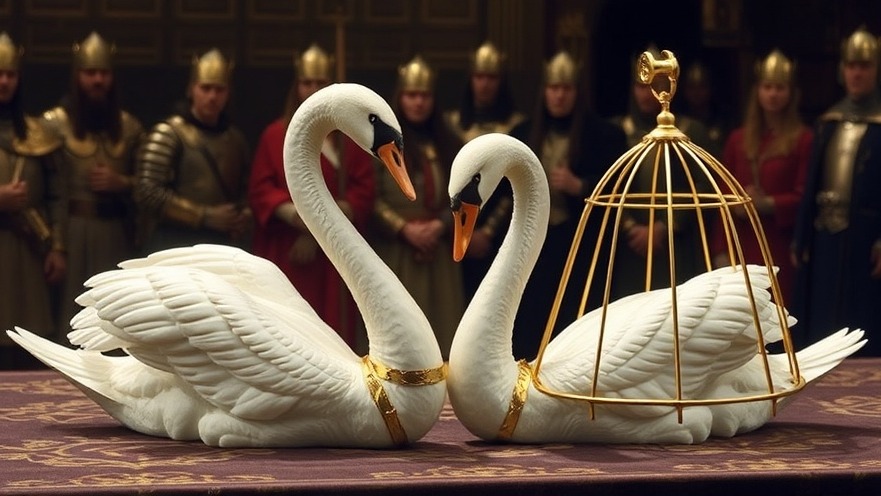
A Curious Chapter in Medieval History
On the 22nd of May 1306, a momentous event unfolded at Westminster Palace in England. Edward I, also known as Edward Longshanks or the Hammer of the Scots, knighting his son, Edward of Caernarfon, marked a significant occasion that was seen as pivotal in the turbulent medieval era. This wasn't just another knighthood ceremony; it was a spectacle filled with extravagance, loyalty, and the promise of vengeance.
In 'When Medieval England Declared War with Swans', the discussion dives into an unusual yet fascinating historical event, prompting an exploration of its deeper significance in our understanding of loyalty and vengeance.
What Happened at the Feast?
The ceremony included 297 other knights being named on that grand day, making it one of the largest mass knightings in medieval England. Following the knighting was a lavish feast—the centerpiece of which was the arrival of two swans. Historical texts and modern interpretations differ on whether these swans were luxurious gold cast replicas or actual living creatures trapped within golden cages. Regardless of their form, these swans were an emblem of loyalty and vengeance in this narrative.

The Symbolism of the Swans
During the feast, Edward I swore an oath on the swans to avenge the death of John Comyn, a Scottish nobleman whose murder had aggravated tensions between Scotland and England. This act of declaring war against his enemies using swans as a symbolic medium was not merely a whimsical moment. It highlighted the gravity of fealty during medieval times, where even the most elaborate setting could be transformed into a battlefield of loyalty, politics, and bloodshed.
Lessons from the Past: The Human Experience
What stands out in this majestic narrative is how the past echoes through time, delivering vital lessons about loyalty, identity, and the bonds we form with others. The extravagant event wasn't just about showing wealth; it was about connection—binding knights through a shared purpose of vengeance. This ritualistic sense of duty and honor deeply resonates with what we often identify as heroism today.
How Does This Relate Today?
Many of us continue to commemorate events that seem trivial but weigh heavily on our identities as nations or communities. Just as Edward I wielded swans to transform a moment into a declaration of war, we too find ourselves rallying around symbols that reflect our values and beliefs. The image of swans, laden with symbolism and emotional depth, prompts reflection on cherished relationships and the respectful bonds we establish across various communities.
Impact on Society: Cultural Reflections
While the details may seem peculiar to contemporary audiences, this story underscores how historical narratives can shape society today. The Feast of the Swans could be interpreted through multiple lenses — a grand royal celebration, a dark prelude to war, an artistic reference, or a social critique of what it meant to be ‘noble’ in that era. Understanding these layers enables us to grapple with historical nuances that remain relevant today.
The Acknowledgment of Historical Accuracy
It’s essential to approach such events and their interpretations critically. The blending of myth with history often creates rich layers of storytelling, highlighting symbols that persist in modern storytelling traditions. As history enthusiasts, we must appreciate the creativity and artistic licenses taken while recognizing the foundational truths that birthed these tales.
The story of Edward I and the extravagant Feast of the Swans epitomizes how history, much like life, finds ways to present complex emotions and ideals through seemingly whimsical acts. To dive deeper into these narratives, explore my latest book, "Call of the Blackbird," which examines various historical events that reverberate through time, revealing their continuing significance today.
 Add Row
Add Row  Add
Add 




 Add Row
Add Row  Add
Add 

Write A Comment